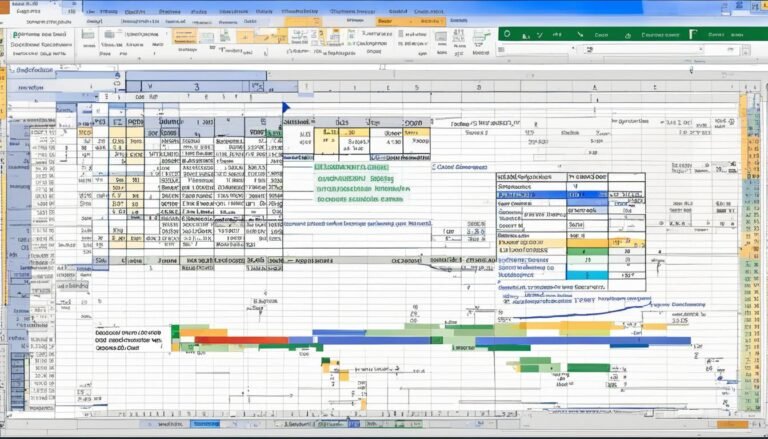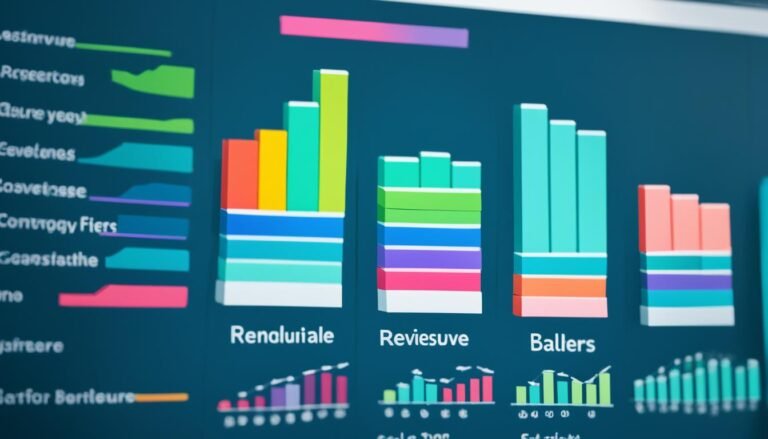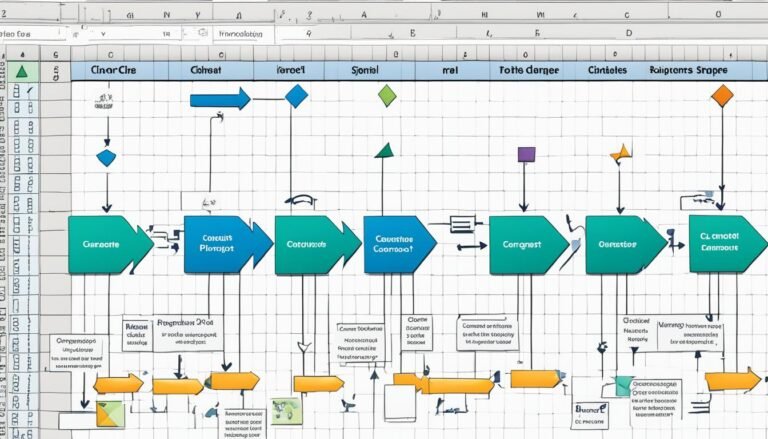Best Excel Tips for Beginners: Unlock Spreadsheet Mastery!
Best Excel tips for beginners include mastering keyboard shortcuts and understanding basic formulas like SUM and AVERAGE. Excel is an essential tool for data management and analysis.
Beginners can significantly boost productivity by learning key features. Keyboard shortcuts save time and streamline tasks. Basic formulas help in performing quick calculations. Understanding how to navigate and manipulate data is crucial. Beginners should also familiarize themselves with Excel’s interface.
Knowing how to create and format spreadsheets is important. Using pivot tables can simplify data analysis. Excel’s functions like VLOOKUP can enhance data retrieval. Conditional formatting aids in visual data representation. Regular practice improves proficiency and confidence. Excel skills open doors to better job opportunities and efficient work processes.
Best Excel Tips for Beginners
Introduction To Excel For Beginners
Excel is a powerful tool for data management and analysis. Beginners can quickly learn its basics. This guide will help you start your Excel journey.
Why Excel Is A Must-know Tool
Excel helps you organize data efficiently. You can use it to create spreadsheets for personal and professional tasks. It offers many features that simplify complex calculations.
- Data Organization
- Simple Calculations
- Charts and Graphs
- Data Analysis
Excel is used in many fields. These include business, education, and science. Knowing how to use Excel increases your job opportunities.
First Steps With Your Excel Journey
Start by opening Excel. You will see a blank grid of cells. Each cell can hold data like text, numbers, or formulas.
- Open Excel: Click on the Excel icon.
- Create a New Workbook: Select ‘New Workbook’ from the menu.
- Enter Data: Click on a cell and type your data.
- Save Your Workbook: Click ‘File’ and then ‘Save As’.
Use the toolbar to format your data. You can change fonts, colors, and cell sizes. This makes your spreadsheet easy to read.
Practice using basic formulas. Start with simple addition, subtraction, multiplication, and division. Excel uses the equal sign (=) to start a formula. For example, =A1+B1 adds the values in cells A1 and B1.
These steps will help you get comfortable with Excel. Practice regularly to improve your skills.
| Task | Shortcut |
|---|---|
| Save Workbook | Ctrl + S |
| Open Workbook | Ctrl + O |
| Copy | Ctrl + C |
| Paste | Ctrl + V |
Setting Up Your Excel Environment
To get the most out of Excel, setting up your environment is key. A well-organized workspace helps you work faster and more efficiently. In this section, we’ll cover the basics to get you started.
Choosing The Right Excel Version
Excel comes in different versions, each with unique features. Choosing the right version is crucial for your needs. Here’s a simple table to help you decide:
| Excel Version | Best For | Key Features |
|---|---|---|
| Excel 2016 | Basic Users | Basic functions, Charts, PivotTables |
| Excel 2019 | Intermediate Users | New Charts, 3D Models, PowerPivot |
| Excel 365 | Advanced Users | Real-time Collaboration, AI Features, Add-ins |
Customizing The Ribbon For Efficiency
The Ribbon is the toolbar at the top of Excel. Customizing it can save you time. Follow these steps to make it work for you:
- Click on File.
- Select Options.
- Go to the Customize Ribbon tab.
- Add or remove tools as needed.
- Click OK to save changes.
Here are some useful tools to add:
- Quick Access Toolbar – For frequently used commands.
- Formulas – For easy access to functions.
- Data – For sorting and filtering data.
By customizing the Ribbon, you create a more efficient work environment.
Mastering Basic Excel Functions
Learning Excel can seem overwhelming, but mastering basic functions helps a lot. This section covers essential tips for beginners.
Entering And Formatting Data
First, you need to enter data correctly. Click a cell to start typing. Press “Enter” to move to the next cell below. Use “Tab” to move to the next cell to the right.
Formatting data makes your spreadsheet clear. Highlight the cells you want to format. Use the toolbar to change the font, size, or color. You can also make data bold or italic. To align text, use the alignment options in the toolbar.
Here’s a simple table example:
| Item | Quantity | Price |
|---|---|---|
| Apples | 10 | $5 |
| Oranges | 8 | $4 |
Basic Formulas Every Beginner Should Know
Formulas help you calculate data quickly. Start with the most common ones.
- SUM: Adds numbers in a range of cells. Example:
=SUM(A1:A10) - AVERAGE: Finds the average of numbers. Example:
=AVERAGE(B1:B10) - MIN: Finds the smallest number. Example:
=MIN(C1:C10) - MAX: Finds the largest number. Example:
=MAX(D1:D10) - COUNT: Counts the number of cells with numbers. Example:
=COUNT(E1:E10)
To use a formula, type it in a cell. Press “Enter” to see the result.
Practice these tips to get comfortable with Excel. It will make your work easier.
Excel Shortcuts To Save Time
Excel is a powerful tool. Learning shortcuts can save you a lot of time. Here are some essential tips to help you work faster in Excel.
Keyboard Shortcuts For Faster Data Entry
Keyboard shortcuts can speed up your work. You won’t need to click around with your mouse. Here are some must-know shortcuts:
| Shortcut | Action |
|---|---|
| Ctrl + C | Copy |
| Ctrl + V | Paste |
| Ctrl + X | Cut |
| Ctrl + Z | Undo |
| Ctrl + Y | Redo |
| Ctrl + Arrow Keys | Move to the edge of data |
Mouse Tricks For Easy Navigation
Your mouse can also help you move quickly in Excel. These tricks are simple but effective:
- Double-click the edge of a cell: Jump to the last cell in a row or column.
- Right-click on sheet tabs: Quickly switch between sheets.
- Drag the fill handle: Quickly copy formulas or values to adjacent cells.
- Ctrl + Scroll Wheel: Zoom in or out of your worksheet.
Use these mouse tricks to navigate Excel more easily. They make your work smoother and faster.
Organizing Data Effectively
Organizing data effectively in Excel is crucial for beginners. Good data organization helps in quick analysis and better decision-making. Mastering a few basic techniques can transform your Excel skills.
Using Sort And Filter For Data Management
Sorting and filtering are essential tools in Excel. They help manage data efficiently.
- Sort: Arrange data in ascending or descending order.
- Filter: Display only the rows that meet specific criteria.
To sort data:
- Select the data range.
- Click on the Data tab.
- Choose Sort A to Z or Sort Z to A.
To filter data:
- Select the data range.
- Click on the Data tab.
- Click on Filter.
- Select the filter criteria from the dropdown.
Conditional Formatting For Data Visualization
Conditional formatting highlights data based on specific conditions. It makes data patterns visible.
To use conditional formatting:
- Select the data range.
- Click on the Home tab.
- Choose Conditional Formatting.
- Select a rule type, such as Highlight Cells Rules.
- Set the condition and format.
Common uses of conditional formatting:
- Highlight cells greater than a value.
- Color scales to show data distribution.
- Data bars to visualize numbers.
Conditional formatting makes your data easy to read and understand.
Creating Your First Excel Chart
Excel charts are powerful tools for visualizing data. They make data easy to understand. Creating your first chart can seem daunting. But with a few steps, you can create professional charts.
Selecting The Right Chart Type
Choosing the right chart type is crucial. Excel offers various chart types:
- Bar Chart
- Line Chart
- Pie Chart
- Column Chart
- Scatter Plot
Each chart type serves a different purpose. Bar Charts are great for comparing quantities. Line Charts show trends over time. Pie Charts display parts of a whole. Column Charts are similar to bar charts but vertical. Scatter Plots show relationships between two variables.
To select a chart type, highlight your data. Click on the “Insert” tab. Choose the chart type that best fits your data.
Customizing Charts For Professional Presentation
After creating a chart, you can customize it. Customizations make your chart look professional. Here are some customization tips:
- Change Colors: Click on the chart. Use the “Chart Tools” to change colors.
- Add Labels: Go to the “Layout” tab. Add axis titles and data labels.
- Adjust Axes: Double-click the axis. Adjust the range to fit your data.
- Insert Legends: Use the “Design” tab to add a legend.
Customizing your chart helps in making data clear. It also makes your presentation look polished and professional.
Excel Functions That Power Users Love
Excel is a powerful tool for beginners and experts. Power users love specific functions. These functions make data analysis easy and efficient. Below are some favorite Excel functions.
Exploring Vlookup And Hlookup
VLOOKUP and HLOOKUP are essential functions for Excel power users. They help you find data in a table. These functions save time and effort.
VLOOKUP stands for “Vertical Lookup.” It searches for data in a column. Here’s a simple VLOOKUP example:
=VLOOKUP(lookup_value, table_array, col_index_num, [range_lookup])HLOOKUP stands for “Horizontal Lookup.” It searches for data in a row. Here’s a simple HLOOKUP example:
=HLOOKUP(lookup_value, table_array, row_index_num, [range_lookup])Both functions help find data quickly. They are useful for large datasets. Use them to enhance your data analysis skills.
Leveraging Pivottables For Data Analysis
PivotTables are a favorite tool among Excel experts. They help summarize and analyze large datasets. PivotTables allow you to organize data in a meaningful way.
Here’s how you can create a PivotTable:
- Select your data range.
- Go to the Insert tab.
- Click on PivotTable.
- Choose where to place the PivotTable.
- Drag and drop fields into the Rows, Columns, and Values areas.
PivotTables allow you to:
- Summarize data.
- Analyze trends.
- Create custom reports.
Mastering PivotTables will make you an Excel expert. They are crucial for data analysis.
Tips For Maintaining Large Spreadsheets
Maintaining large spreadsheets can be challenging for beginners. With many rows and columns, it’s easy to feel overwhelmed. Following some best practices will help you manage your data effectively.
Best Practices For Spreadsheet Management
Organizing your spreadsheet from the start is key. Here are some tips:
- Use Clear Headers: Label each column clearly. This helps you and others understand the data.
- Freeze Panes: Keep headers visible while scrolling. Go to View > Freeze Panes to lock them.
- Use Filters: Filters help you find data quickly. Select your data and click Data > Filter.
- Color Coding: Use colors to highlight important data. This makes it easy to spot trends.
- Consistent Data Entry: Ensure data is entered consistently. This avoids errors and makes sorting easier.
Troubleshooting Common Excel Errors
Errors in Excel can be frustrating. Here are some common ones and how to fix them:
| Error | Solution |
|---|---|
| #VALUE! | Check for incorrect data types. Ensure all cells have the right data type. |
| #DIV/0! | This error occurs when dividing by zero. Fix the divisor to a non-zero number. |
| #REF! | This happens due to invalid cell references. Check and correct the cell references. |
| #NAME? | This error appears if Excel doesn’t recognize a formula. Check for typos or use the correct function name. |
Using these tips, managing large spreadsheets can become more manageable. Follow these practices and troubleshoot errors to keep your data organized and accurate.
Continuing Your Excel Education
Learning Excel doesn’t stop with the basics. There are endless tips and tricks to master. Continuing your Excel education can make you an expert. You will be more efficient and productive.
Resources For Further Learning
There are many resources to help you learn more about Excel.
- Microsoft Excel Help Center: This is the official resource from Microsoft. It offers tutorials and guides.
- YouTube Channels: Channels like ExcelIsFun and MyOnlineTrainingHub provide video tutorials. These videos cover a wide range of topics.
- Online Courses: Platforms like Coursera and Udemy offer structured courses. These courses often include quizzes and assignments.
| Resource | Type | Benefits |
|---|---|---|
| Microsoft Excel Help Center | Official Documentation | Comprehensive and reliable |
| YouTube Channels | Video Tutorials | Visual and easy to follow |
| Online Courses | Structured Learning | In-depth with assessments |
Joining Excel Communities For Support
Excel communities are great for learning and support.
They offer a place to ask questions and get answers.
- Reddit: Subreddits like r/excel are very active. Users share tips, answer questions, and provide feedback.
- Forums: Websites like ExcelForum and MrExcel Forum are dedicated to Excel discussions. You can browse threads or start your own.
- Social Media Groups: Facebook and LinkedIn have groups for Excel enthusiasts. These groups are useful for networking and learning new tricks.
Engaging in these communities can make learning Excel fun. It also helps you stay updated with new features and trends.
Frequently Asked Questions
What Is The Best Way To Learn Excel For Beginners?
The best way to learn Excel for beginners is to take online courses, watch tutorials, and practice regularly.
How To Use Excel Like A Pro?
Master Excel by learning shortcuts, using formulas, creating pivot tables, and leveraging conditional formatting. Practice regularly.
How Can I Get Better At Excel Fast?
Practice daily with Excel tutorials and exercises. Use keyboard shortcuts to speed up tasks. Join online Excel communities. Explore Excel templates and functions. Take advanced Excel courses for deeper knowledge.
What Are The 5 Powerful Excel Functions That Make Work Easier?
The 5 powerful Excel functions are VLOOKUP, SUMIF, CONCATENATE, IF, and INDEX-MATCH. They simplify data analysis, automate calculations, and enhance productivity.
What Are The Top Excel Shortcuts?
Excel shortcuts save time. Use Ctrl+C to copy, Ctrl+V to paste, and Ctrl+Z to undo.
Conclusion
Mastering Excel can boost productivity and efficiency. These tips are perfect for beginners to get started quickly. Practice regularly to become proficient. Explore more advanced features as you grow comfortable. Excel’s capabilities are vast, so continue learning and experimenting. Your journey with Excel has only just begun.




